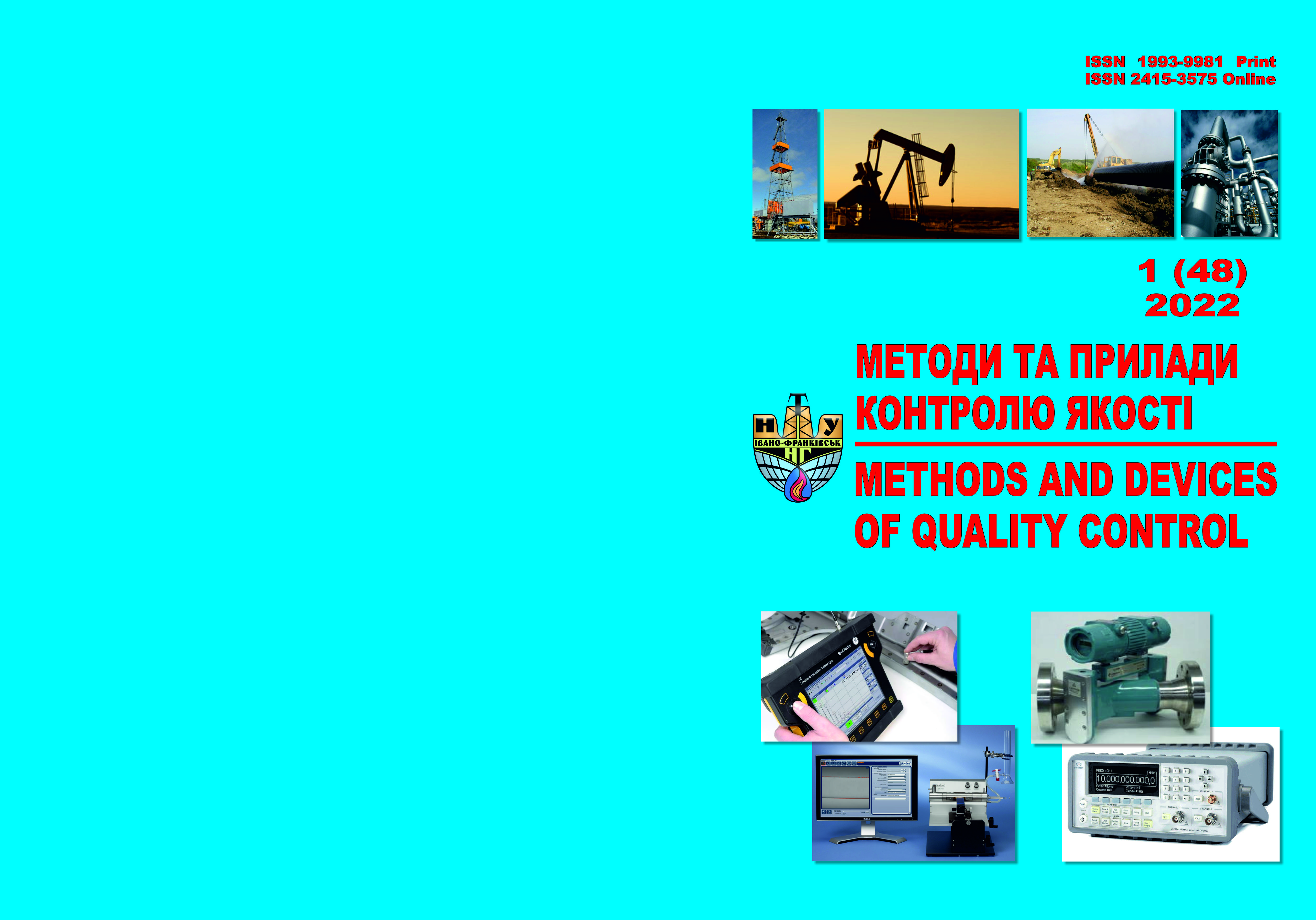ВИКОРИСТАННЯ МЕТОДУ КОНФОРМНИХ ВІДОБРАЖЕНЬ ДЛЯ КОНТРОЛЮ КАВІТАЦІЙНИХ ХАРАКТЕРИСТИК СТРУМИННОГО НАСОСА
DOI:
https://doi.org/10.31471/1993-9981-2022-1(48)-18-26Ключові слова:
свердловинний струминний насос, циркуляційні потоки, кавітація, гідродинамічні функції, комплексний по-тенціалАнотація
Сучасні методи дослідження кавітаційних режимів експлуатації свердловинної ежекційної системи не враховують можливість її обертання в свердловині, внаслідок чого зменшується ефективність прогнозування режиму роботи струминного насоса. В роботі запропонований механізм визначення впливу обертання струминного насоса на конфігурацію ліній течії змішуваних потоків за допомогою теорії плоских потенціальних потоків. Для побудови конфігурації ліній течії за заданим полем швидкостей застосовано метод конформного відображення, який полягає у відображенні області з відомим комплексним потенціалом на область течії з заданими границями. Границі областей робочого та інжектованого потоку визначені відповідно до теорії струменів: на твердих поверхнях, які обмежують течію нормальна складова швидкості дорівнює нулю, а на вільних поверхнях модуль швидкості приймає постійні значення. Відповідно до розробленої автором математичної моделі наявність циркуляційної течії може бути врахована шляхом використання коефіцієнта нерівномірності розподілу поздовжніх швидкостей по перерізу робочого струменя. Обертання потоку за рахунок дії сил в’язкісного тертя змінює епюру поздовжніх швидкостей, що може бути враховано введенням у відому методику розрахунку коефіцієнта нерівномірності. Використовуючи відомі процедури визначення вигляду функцій в площинах комплексної змінної та змінної Жуковського отримана система рівнянь координат струменя в параметричній формі. Розвязок отриманої системи рівнянь дозволив отримати прямий зв'язок між координатами струменя. Координати траєкторії робочого струменя визначаються величиною діаметра робочої насадки струминного насоса, відстанню до камери змішування та нерівномірністю розподілу швидкостей в потоці, викликану обертанням ежекційної системи в свердловині. Зростання відстані між робочою насадкою та камерою змішування струминного насоса викликає зменшення радіуса поширення струменя робочого потоку.
Завантаження
Посилання
BP Energy Outlook 2017 Edition. 2017. 103 p. bp.com/energyoutlook # BP stats.
Markevych K., Omelchenko V. Hlobalni enerhetychni trendy kriz pryzmu natsionalnykh interesiv: analitychna dopovid (Tsentr Razumkova). Kyiv: Zapovit, 2016. 118 р. https://razumkov.org.ua › 2016_glob_ener_trendy.
Domagala M. Simulation of cavitation in jet pumps. Technical transactions mechanics. 1-M / 2013. № 7(2) P.51–58. https://www.ejournals.eu › pliki › art.
Long Y., An C., Zhu R., Chen J. Research on hydrodynamics of high velocity regions in a water-jet pump based on experimental and numerical calculations at different cavitation conditions. Physics of Fluids. 2021. Vol. 33. Issue 4. 8 p. https://doi.org/10.1063/5.0040618.
Wang X., Chen Y., Li M., Xu Y., Wang B., Dang X. Numerical investigation of the cavitation performance of annular jet pumps with different profiles of suction chamber and throat inlet. Engineering Applications of Computational Fluid Mechanics. 2020. Vol. 14. Issue 1. P. 1416–1428. https://doi.org/10.1080/19942060.2020.1824875.
Narui H., Inagaki S. Limiting Flow Cavitation Number of Water Jet Pumps. Bulletin of JSME. 1982. Vol. 25. Issue 209. P.1682–1689. https://doi.org/10.1299/jsme1958.25.1682.
Long X., Zhang J., Wang Q., Xiao L., Xu M., Lyu Q., Ji B. Experimental investigation on the performance of jet pump cavitation reactor at different area ratios. Experimental Thermal and Fluid Science (EXP THERM FLUID SCI)2016. № 78. P. 309-321.
https://doi.org/10.1016/j.expthermflusci.2016.06.018.
Wang X., Chen Y., Li M., Xu Y., Wang B., Dang X. Numerical Study on the Working Performance of a Streamlined Annular Jet Pump. Energies. 2020. № Vol. 13. Issue 17. 15 p. https://doi.org/10.3390/en13174411.
Panevnyk D.A. Simulation of a downhole jet-vortex pump’s working process. Nafta-Gaz 2021, no. 9, pp. 579–586. https://doi.org/10.18668/NG.2021.09.02.
Panevnyk D.O. Analysis of studies of the influence of flow vortex on the characteristics of downhole jet pumps. Prospecting and Development of Oil and Gas Fields. 2020. no. 4(77). Р. 31-40. https://doi.org/10.31471/1993-9973-2020-4(77)-31-40.
Zi H., Zhou L., Meng L., Wang Z. Prediction and analysis of jet pump cavitation using Large Eddy Simulation. Journal of Physics Conference. December 2015. Series 656(1):012142. 5 p. https://doi.org/ 10.1088/1742-6596/656/1/012142.
Panevnyk D.O. Substantiation of the method of modeling circulating flows during the rotation of the overhead jet pump. Prospecting and Development of Oil and Gas Fields. 2021. № 3(80). Р.46–52. https://doi.org/10.31471/1993-9973-2021-3(80)-46-52.
Abramovich G.N. Teoriya turbulentnyh struj. M.: Fizmatgiz, 1960. 824 р.
Kochin N.E., Kibel' I.A., Roze N.V. Teoreticheskaya gidromekhanika. M.: Fizmatgiz, 1963. CH.1. 1963. 584 р.


.png)




